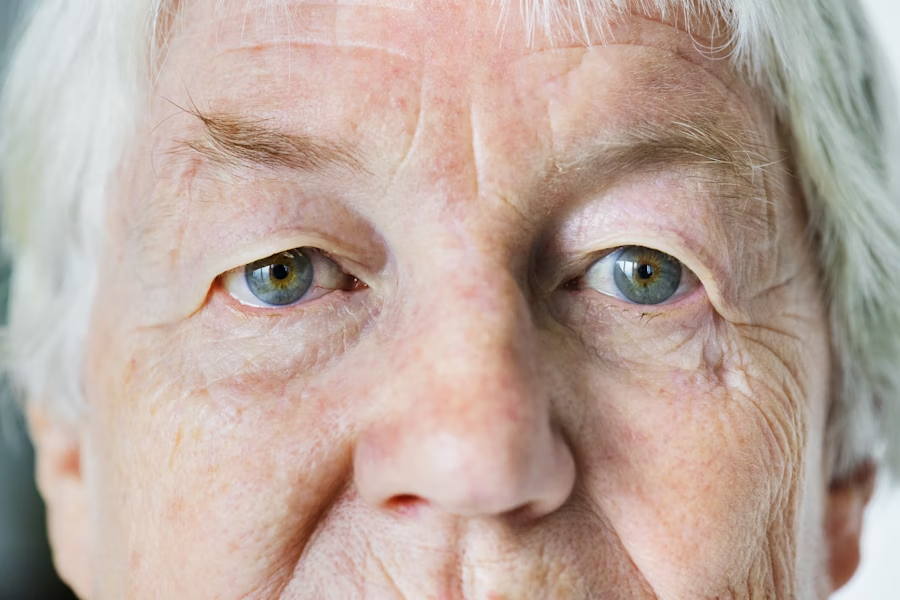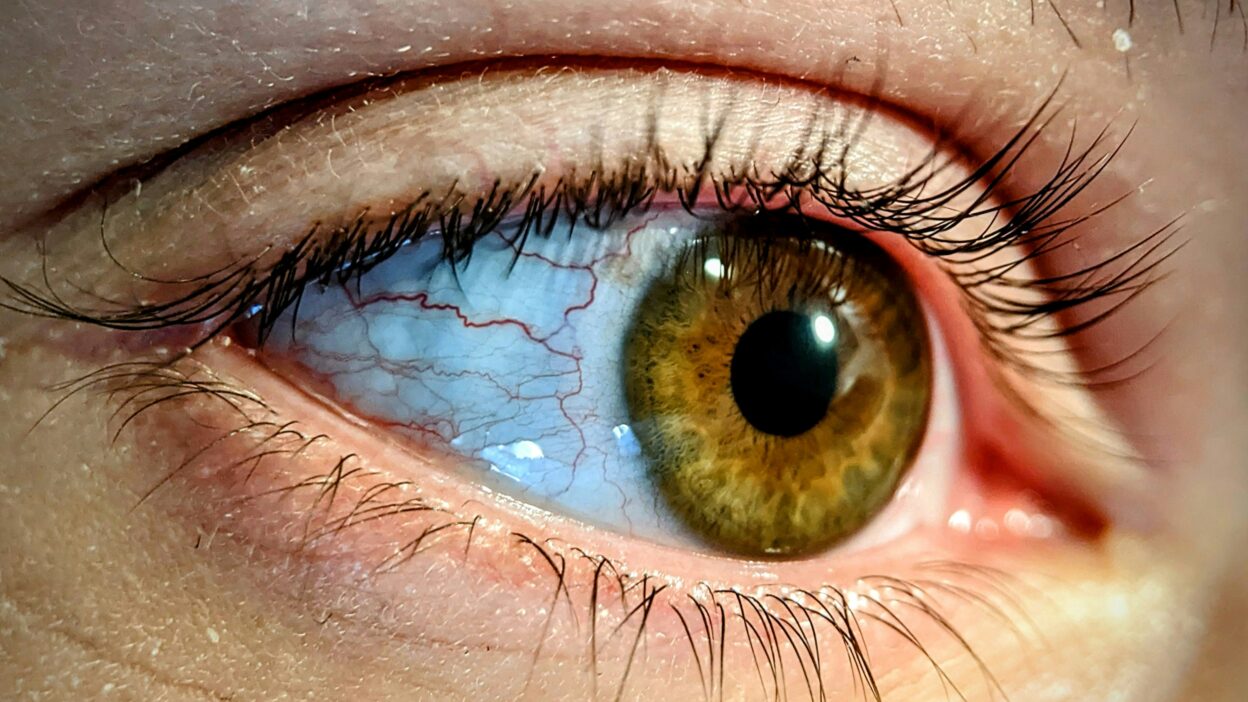Izervay (avacincaptad pegol) is an FDA-approved treatment developed by Astellas to address Geographic Atrophy (GA), an advanced form of dry age-related macular degeneration (AMD). For years, patients battling GA had limited options — but now, Izervay provides a targeted therapy that can slow the progression of vision loss.
Disclaimer: This blog is for educational purposes only and does not offer medical advice, diagnosis, or treatment. Always consult a healthcare provider for medical concerns.Dry AMD affects millions of aging adults globally, causing irreversible damage to the macula — the part of the retina responsible for central vision. Left untreated, it can lead to significant vision impairment, affecting daily tasks like reading, driving, and recognizing faces.
Izervay works by inhibiting complement C5, a key component of the complement system believed to contribute to GA progression. With its novel mechanism of action, avacincaptad pegol helps preserve vision and slow disease advancement.

How Does Izervay Work?
Understanding the Mechanism of Action
Izervay targets and binds to complement C5, preventing its activation. The complement pathway is involved in inflammation and cell damage that contribute to geographic atrophy.
By blocking C5, Izervay helps slow the progression of GA lesions, ultimately helping to preserve patients’ remaining vision for longer. This targeted action makes it unique compared to older, non-specific treatments.
Does Izervay Work Immediately?
No. Like most GA treatments, Izervay does not reverse existing vision loss but helps slow the disease’s progression over time. Studies have shown significant slowing of lesion growth in clinical trials. However, consistent treatment and follow-up are critical for optimal outcomes.
Izervay Administration: What to Expect
How Is Izervay Given?
Izervay is administered through intravitreal eye injections (often referred to as Izervay eye shots). The injections are performed by ophthalmologists specializing in retinal care.
- Typically administered once monthly.
- The procedure is quick, generally taking only a few minutes.
- Patients may experience mild discomfort, but most tolerate the procedure well.
Common Side Effects of Izervay
As with any medical treatment, there are potential risks. The most common side effects reported include:
- Eye discomfort
- Blurred vision temporarily after injection
- Increased intraocular pressure
- Risk of intraocular inflammation or endophthalmitis (rare but serious)
Always consult your eye care professional about potential risks and side effects.
Is Izervay Right for You? Eligibility and Patient Assistance
Izervay Eligibility Criteria
You may be a candidate for Izervay if you:
- Have been diagnosed with geographic atrophy (GA) secondary to dry AMD.
- Are under the care of a retinal specialist.
- Meet FDA-approved criteria based on medical evaluation.
Your doctor will assess your retina health using advanced imaging tools to determine if Izervay is suitable for your condition.
Astellas Support Programs
Astellas offers multiple resources and patient assistance programs to make Izervay more accessible, including:
- Izervay Copay Assistance Program: Helps eligible patients lower out-of-pocket costs.
- Izervay Savings Card: May reduce copays for commercially insured patients.
- Patient Assistance Program: For uninsured or underinsured patients.
- Dedicated support teams and downloadable patient brochures.
Cost of Izervay and Insurance Coverage
How Much Does Izervay Cost?
The cost of Izervay can range from $1,500 to $2,000 per injection without insurance, depending on provider pricing and location. However, many patients pay significantly less thanks to insurance coverage and financial assistance programs.
Does Insurance Cover Izervay?
- Medicare and private insurers often cover Izervay under medical benefits.
- Prior authorization may be required.
- Check your specific plan and ask your retina specialist’s office to assist with approvals.
Izervay cost with Medicare is generally lower, though patients should verify coinsurance amounts and supplemental coverage options.
What Sets Izervay Apart from Other Treatments?
Unique Benefits of Izervay
- FDA-approved specifically for geographic atrophy secondary to dry AMD.
- Targets complement C5 — a proven driver of GA progression.
- Backed by robust clinical data from randomized controlled trials.
- Supported by Astellas patient services and assistance programs.
Izervay vs. Alternatives
While other medications are emerging for dry AMD, Izervay’s complement inhibition offers a targeted approach supported by extensive research.
Always discuss Izervay alternatives with your retinal specialist to make the best treatment choice for your specific needs.
FAQs About Izervay
What Is Izervay Used For?
Izervay treats geographic atrophy (GA) secondary to dry age-related macular degeneration (AMD). It helps slow the disease’s progression.
What Are the Side Effects of Izervay?
- Eye discomfort
- Blurred vision
- Elevated eye pressure
- Rare risk of infection or inflammation
Is Izervay FDA Approved?
Yes. Izervay is FDA-approved for geographic atrophy secondary to dry AMD.
How Long Do I Stay on Izervay?
Ongoing, monthly treatment is typically recommended for sustained benefits. Your retina specialist will monitor your progress regularly.
Conclusion
Izervay represents a major advancement in dry AMD care, offering new hope to patients facing vision loss from geographic atrophy. With its targeted mechanism, FDA approval, comprehensive support programs, and growing clinical success, Izervay has quickly become a trusted option for eye care specialists and patients alike.
If you or a loved one has been diagnosed with geographic atrophy, speak to your retina specialist today about whether Izervay may be right for you.



